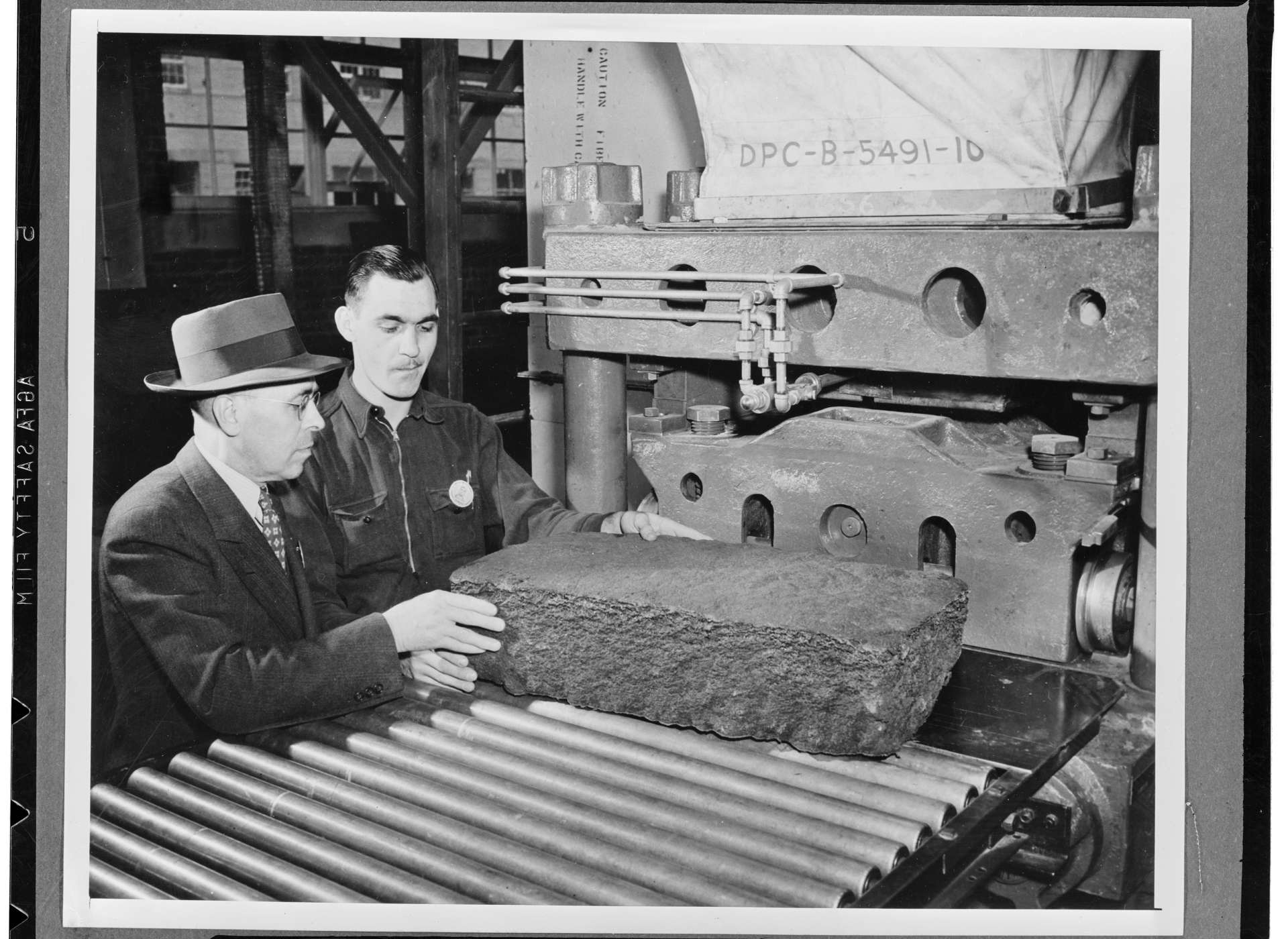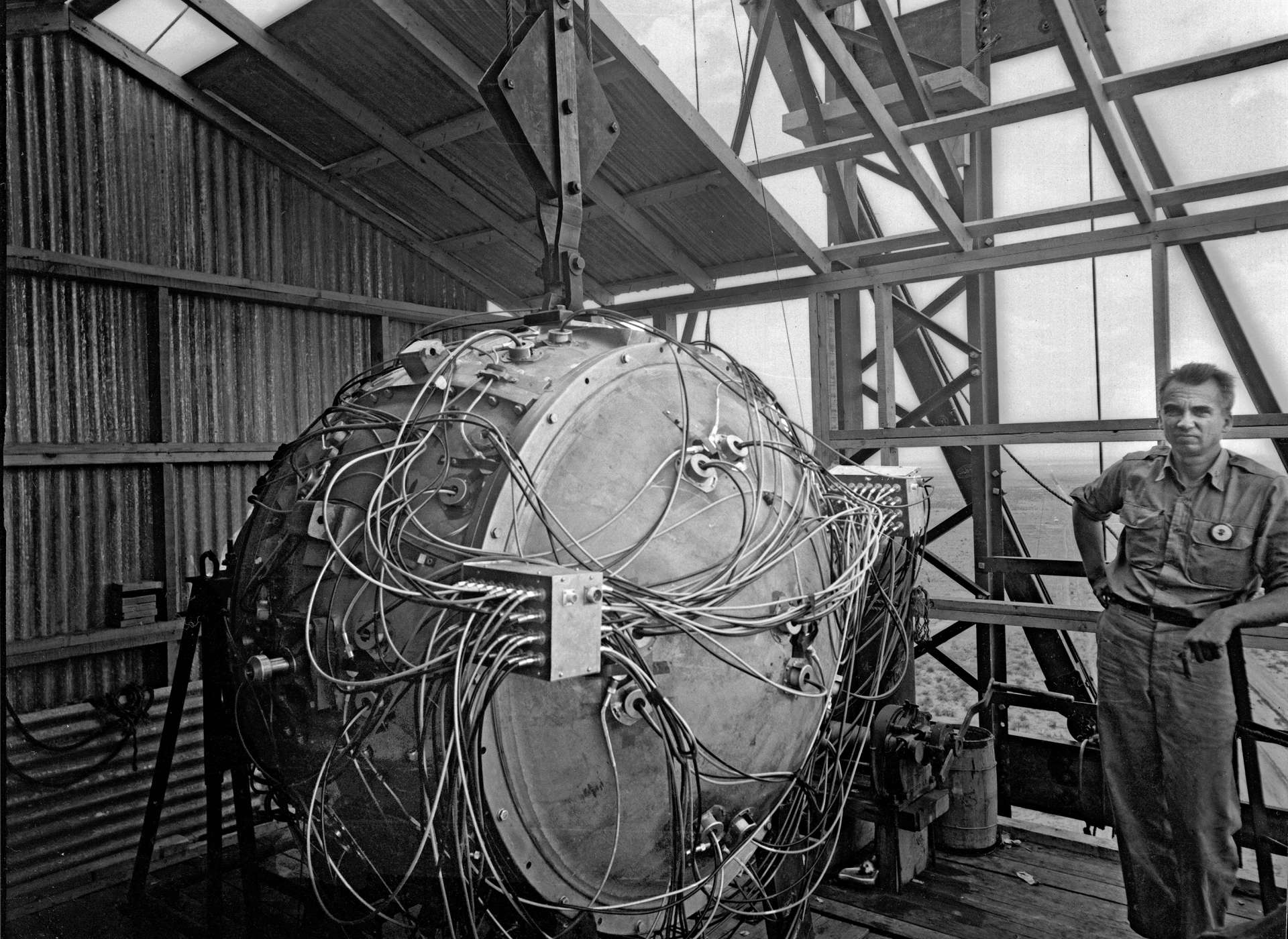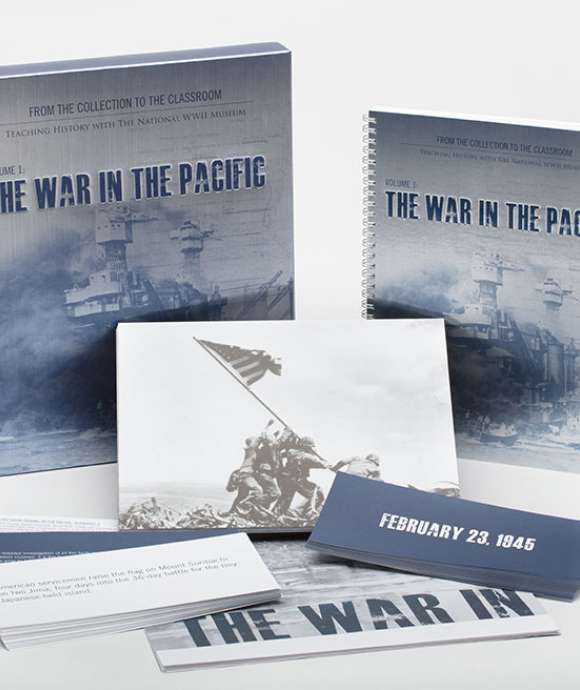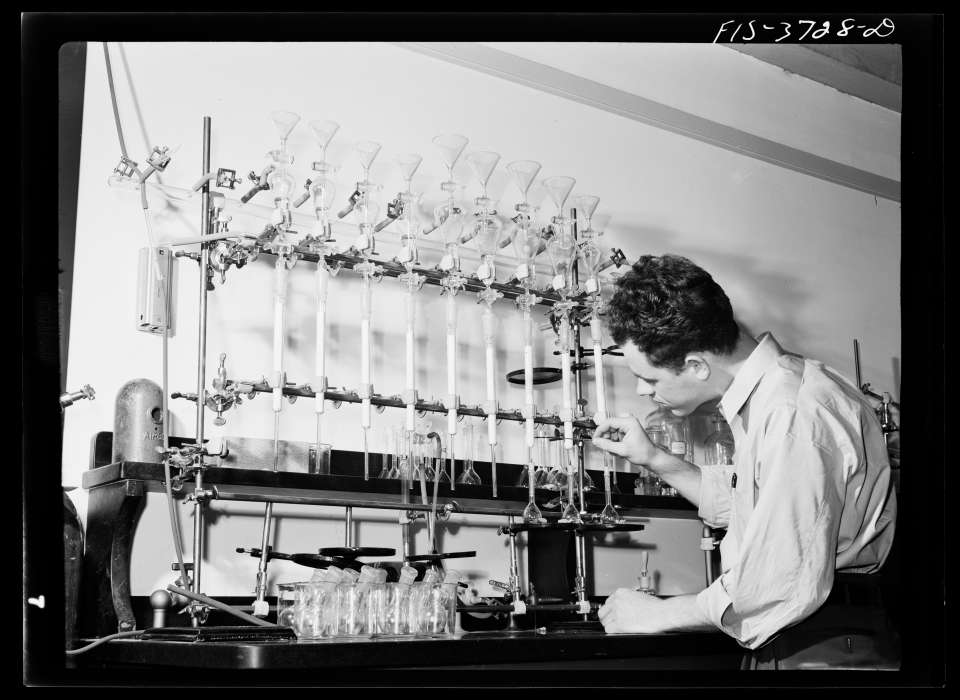Top Image: Library of Congress, LC-USW3-003728-D.
There’s an old saying that necessity is the mother of invention. That sentiment was definitely the case during World War II, a massive global conflict that presented the United States with a variety of tactical and logistical challenges. At every turn Americans seemed to need more of everything—more supplies, bigger bombs, faster airplanes, better medical treatments, and more precise communications. In response, scientists, technicians, and inventors supplied a steady stream of new products that helped make victory possible. Many of these innovations transformed the very nature of warfare for future generations and also had a significant impact on the lives of civilians as well.
Some of the new inventions helped the United States find the strategic goods necessary for fighting the war. Rubber, for example, was a vital material that was needed in enormous quantities. Building a military airplane required about 1,000 pounds of rubber, a tank needed about 2,000 pounds, and a battleship required about 75 tons. In addition, each person in the military received about 32 pounds of rubber footwear, clothing, and equipment. Normally, the rubber for these items would have come from the latex produced by millions of rubber trees growing mainly in the Dutch East Indies (present-day Indonesia) and the Malay Peninsula. In 1942, however, Japan seized both of these regions, effectively cutting off the US supply of natural rubber.

Synthetic rubber production, ca. 1940.
(Image: Library of Congress, LC-USW33-028402-C.)
The government had to act fast, and on a huge scale. Scientists had experimented with synthetic rubber as early as the 19th century, but large-scale production had never taken off in the United States. With wartime demand for rubber high and the supply of natural rubber drying up, President Franklin Delano Roosevelt’s administration invested $700 million in 51 new plants designed to make synthetic rubber from petroleum byproducts. Businesses like Firestone, Goodyear, Goodrich, and US Rubber Company, which had all been working on different formulas for synthetic rubber, agreed to share patents and scientific information with one another so that they could help solve the nation’s rubber crisis. By 1944, synthetic rubber plants were producing around 800,000 tons of material annually for the war effort.
Other WWII innovations like specialized boats, vehicles, and aircraft emerged from the military’s need to tackle lots of diverse terrain and tactical situations on battlefields all over the world. In 1940, for example, the US Army set out to modernize its transportation equipment in case the nation should be drawn into the war. Army officials called on American automakers to submit designs for a new “general purpose” military vehicle that could operate in a wide range of environments. Such a vehicle had to be light—no more than 1,300 pounds—yet it had to be able to carry at least three fully armed soldiers and a large machine gun. It also had to be able to climb a 45-degree slope fully loaded and make it through water up to 18 inches deep.
Three companies built prototypes—the Ford Motor Company, Willys-Overland, and the American Bantam Car Company. Bantam’s prototype arrived first, and the other models ended up borrowing elements of its design. To make sure enough of these vehicles would be available for the war, the Army awarded production contracts to all three companies, with Ford and Willys making the majority. Soon, the United States was at war and these vehicles, which quickly received the nickname “jeep,” were carrying Allied troops around battle zones all over the globe.
The atomic bomb was arguably the most significant new technology developed during the war, as well as the most complex. Building the bomb required more than $2 billion, 125,000 workers, and a whole series of laboratories and factories spread out across the United States—for example, in Tennessee, Illinois, Washington, and New Mexico. This construction program, code-named the Manhattan Project, began when scientists alerted the Roosevelt administration to the likelihood that highly destructive atomic weapons were possible and that Nazi Germany was probably already building one.
Even the scientists were dazzled by how much time and effort an atomic bomb would take to build. “It can never be done,” said Danish physicist Niels Bohr, “unless you turn the United States into one huge factory.” In practice, the operation was much smaller, but it still required superior organization and speed. Starting in 1942, Manhattan Project personnel built the world’s first nuclear reactors, processed tons of uranium ore to isolate radioactive material for the bombs, and designed incredibly precise mechanisms to make them explode at exactly the right moment. On July 16, 1945, in a test code-named Trinity, the scientists witnessed the first successful atomic explosion. Less than a month later, American bombers dropped two additional atomic bombs on the Japanese cities of Hiroshima and Nagasaki, ultimately convincing the Japanese government to surrender.

Gadget before Trinity Test, 1945.
(Image: US Department of Energy, HD.4G.053.)
Besides these major innovations, there were also plenty of smaller breakthroughs, some of which only gained public attention after the war was over, sometimes as consumer products for civilians. For instance, a young scientist named Harry Coover discovered the active ingredient in Super Glue while searching for a clear plastic he could use to make gun sights. Duct tape, another sticky household staple, was developed by Johnson & Johnson’s Permacel division to keep moisture out of the military’s ammunition cases. The inventors called the new product “duck” tape because it repelled water like a duck’s feathers. Scientists even invented a few toys by accident while working on products for the war. Silly Putty started out as a rubber substitute, and the Slinky came from a spring intended to stop ship instruments from vibrating.

Like this article? Read more in our online classroom.
From the Collection to the Classroom: Teaching History with The National WWII Museum
Inventions like synthetic rubber, the jeep, the atomic bomb, and even duct tape helped the Allies win World War II by allowing their militaries to wage war on an overwhelming scale. Not only could the United States outproduce its enemies, but it also had the money, materials, and ingenuity necessary to create the best possible equipment and supplies all of which helped the Allies fight more efficiently and effectively.
Cite this article:
MLA Citation:
APA Citation:
Chicago Style Citation:








